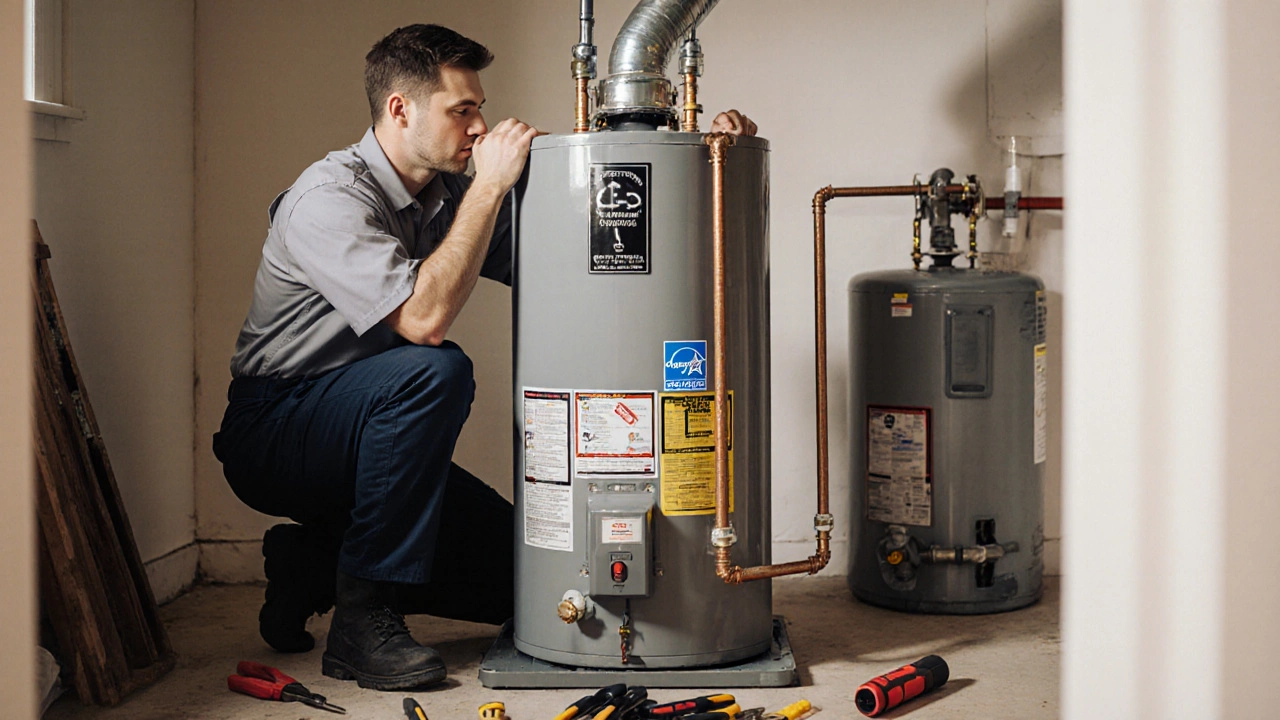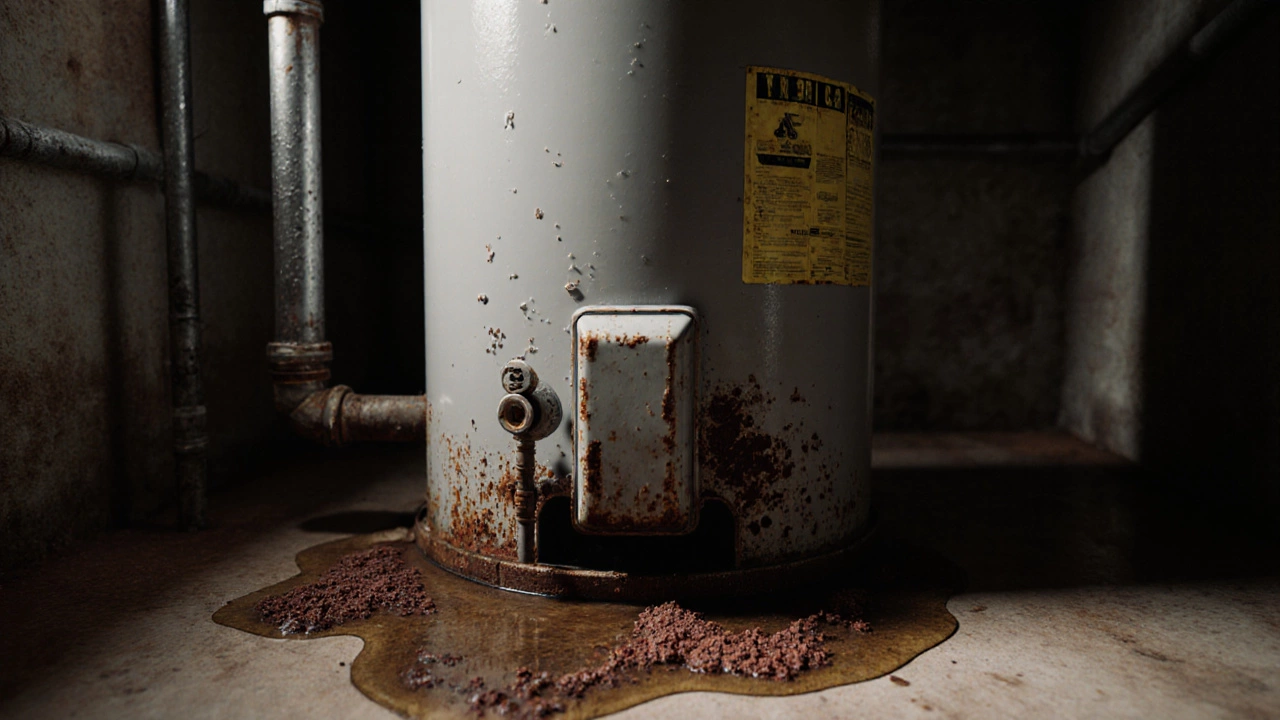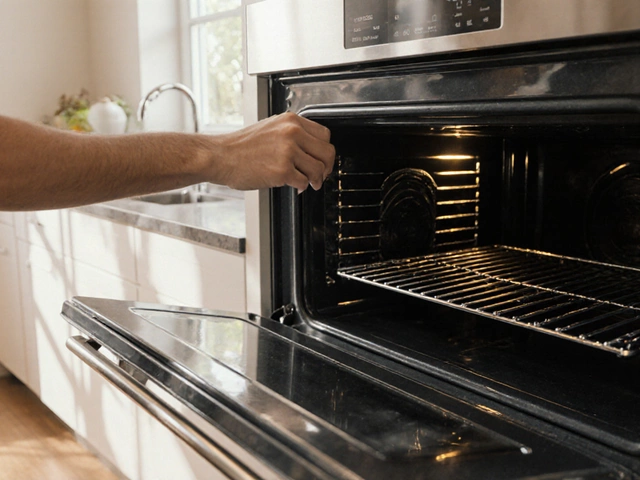Water Heater Replacement Savings Calculator
Find out if replacing your water heater will save you money. Enter your current heater details to calculate potential energy savings and payback period.
Estimated Savings
Annual Energy Savings
$0.00
Payback Period
0 years
Based on your heater age and energy costs. Typical 30% efficiency improvement for new models.
If your hot water suddenly turns cold in the middle of a shower, or you notice rust-colored water coming out of the tap, you’re not just having a bad day-you might be dealing with a water heater on its last legs. In Auckland, where winters can be damp and chilly, a broken hot water heater isn’t just inconvenient-it’s a real quality-of-life issue. Most households rely on their water heater every single day, but few know the real signs it’s time to replace it instead of just repairing it.
Your water heater is over 10 years old
Most tank-style water heaters last between 8 and 12 years. If yours is 10 or older, you’re in the danger zone. It’s not just about age-it’s about wear. The internal lining, made of glass to protect the steel tank, slowly breaks down from constant exposure to water and minerals. Once it cracks, rust starts forming inside. That’s why older units start leaking or producing discolored water. Even if it’s still working, an older heater is less efficient. A 12-year-old unit can use up to 30% more energy than a new one, meaning higher bills for less hot water.
You see rust or corrosion on the tank
Look at the base of your water heater. If you spot reddish-brown flakes, or the metal looks pitted and flaky, that’s rust. Rust on the outside means moisture is getting in-and that usually means the tank itself is corroding from the inside. You might also see rust around the pressure relief valve or the inlet/outlet pipes. These aren’t just cosmetic issues. Rust on the tank is a sign the metal has weakened. A small leak today can turn into a full tank rupture tomorrow, flooding your laundry or utility room. No repair can fix a rusted tank. Once it’s there, replacement is the only safe option.
There’s water pooling around the base
A little condensation on a cold morning? Normal. A puddle that keeps coming back? Not normal. Water pooling under your heater is a red flag. It could be a loose fitting, a faulty valve, or a cracked tank. Start by checking the connections-the cold water inlet, the hot water outlet, and the pressure relief valve. Tighten them if needed. If the leak keeps coming back after you’ve checked those, the tank itself is likely the culprit. A cracked tank won’t seal up, no matter how many times you patch it. Replacing it is cheaper than dealing with water damage to your floor, walls, or subfloor.
The water isn’t hot enough-or it runs out too fast
Remember when you could take a long shower and still have hot water for the dishes? Now, after five minutes, it turns icy. That’s not a plumbing problem. That’s your water heater struggling. Sediment builds up at the bottom of the tank over time, acting like insulation. That means the heating element can’t reach the water efficiently. If you’ve flushed the tank and it still doesn’t recover, the heating element or thermostat may be worn out. But if you’ve got a 10-year-old unit and the hot water keeps fading, it’s not worth replacing just the element. The tank is probably full of sediment and rust. A new 50-gallon unit will give you consistent hot water for twice as long, with better efficiency.

You hear strange noises from the heater
Pop, crackle, rumble-those aren’t just random sounds. They’re signs of sediment buildup. When minerals in the water settle at the bottom of the tank, they form a thick layer. When the burner heats up, the water trapped under that layer boils and creates those noises. It’s like a pot of water with sand at the bottom. The noise itself isn’t dangerous, but it means your heater is working harder than it should. That extra strain wears out the heating element faster and reduces efficiency. If you’ve been hearing this for months, and flushing the tank didn’t help, the damage is likely permanent. Replacing the unit is more cost-effective than spending hundreds on repairs for a system that’s already running on borrowed time.
High energy bills with less hot water
If your electricity or gas bill has crept up over the past year-and your usage hasn’t changed-your water heater is probably the reason. Older units lose heat through the tank walls. Even well-insulated tanks from 15 years ago are nowhere near as efficient as today’s models. New water heaters have thicker foam insulation, better seals, and smart thermostats that adjust based on usage. A modern 50-gallon unit can save you $150 to $300 a year on energy compared to a 12-year-old one. If your bills are climbing and your hot water is dwindling, the math is clear: replacement pays for itself in a few years.
Discolored or smelly water
Orange, brown, or yellow water? That’s rust from inside the tank. It’s not just ugly-it can clog showerheads, stain sinks, and ruin laundry. If you’ve got a water softener or live in an area with hard water, rust builds up faster. Sometimes, the smell is worse than the color. A rotten egg smell usually means bacteria are growing in the tank, feeding off the magnesium anode rod. Replacing the anode rod can help, but if the tank itself is corroded, the bacteria will keep coming back. A new tank with a new anode rod will solve the problem for good. Don’t keep fighting the same issue year after year.

Manufacturer recalls or outdated models
Some water heaters from the early 2000s were recalled due to faulty pressure relief valves or overheating risks. Even if yours is still working, it might not be safe. Check the model number on the label and search online for recalls. If your unit is on a recall list, replace it immediately. Also, if your heater uses an older type of anode rod or has no energy efficiency label, it’s likely not meeting current standards. Newer models come with better safety features, longer warranties, and digital diagnostics. You’re not just replacing a broken appliance-you’re upgrading to a safer, smarter system.
What to do next
If you’ve noticed two or more of these signs, it’s time to start thinking about replacement. Don’t wait until your heater fails in the middle of the night. Plan ahead. Measure the space where your current unit sits. Note the fuel type-electric, gas, or heat pump. Check your local building codes; Auckland requires permits for water heater replacements. Look for Energy Star-rated models-they’re more efficient and may qualify for rebates. Get quotes from two or three licensed plumbers. Don’t just go for the cheapest. A good installation matters just as much as the unit itself.
Replacing a water heater isn’t a DIY job for most people. It involves gas lines, electrical connections, water pressure, and drainage. One mistake and you could flood your home or create a gas leak. Leave it to professionals. A proper install ensures your new heater runs safely and efficiently for the next 10 to 15 years.
What you’ll save by replacing it
Here’s the real benefit: a new water heater doesn’t just fix your hot water-it saves you money over time. You’ll use less energy. You’ll avoid emergency repair calls. You’ll prevent water damage. And you’ll get a 10-year warranty, not the 6-year one your old unit probably had. In Auckland’s climate, where hot showers are a necessity, a reliable water heater isn’t a luxury. It’s essential. Replacing it before it fails is the smartest home maintenance move you can make.
Can I repair my water heater instead of replacing it?
You can repair minor issues like a faulty thermostat, a leaking pressure valve, or a broken heating element. But if your tank is over 10 years old, shows rust, leaks from the body, or has major sediment buildup, repairs won’t last. Fixing a 12-year-old tank is like putting a bandage on a cracked foundation-it might hold for a few months, but the problem will come back. Replacement is more cost-effective in the long run.
How long does a water heater replacement take?
A licensed plumber can usually remove the old unit and install a new one in 3 to 6 hours. If you’re switching from gas to electric, or need to upgrade your plumbing or electrical lines, it might take a full day. Most replacements are done in a single day, with minimal disruption to your home.
Should I get a tank or tankless water heater?
Tank heaters are cheaper upfront and easier to install. They’re ideal for homes with steady hot water use. Tankless heaters heat water on demand, so they save energy and last longer-up to 20 years. But they cost more to install and need proper gas line or electrical upgrades. If you have a large household and use a lot of hot water at once, a tankless system might be worth the investment. For most Auckland homes, a 50-gallon tank is still the best balance of cost and performance.
Do I need a permit to replace my water heater in Auckland?
Yes. Auckland Council requires a building consent for water heater replacements. This ensures the installation meets safety standards for gas, electrical, and plumbing. A licensed plumber will handle the permit process for you. Skipping this step can void your home insurance and create liability if something goes wrong.
What’s the average cost to replace a water heater in Auckland?
For a standard 50-gallon electric water heater, including removal, installation, and permit fees, expect to pay between $1,800 and $2,800. Gas units cost a bit more-$2,200 to $3,500-because of venting and gas line work. Tankless systems range from $3,500 to $5,500. Prices vary based on brand, warranty, and site conditions. Get multiple quotes to compare.





